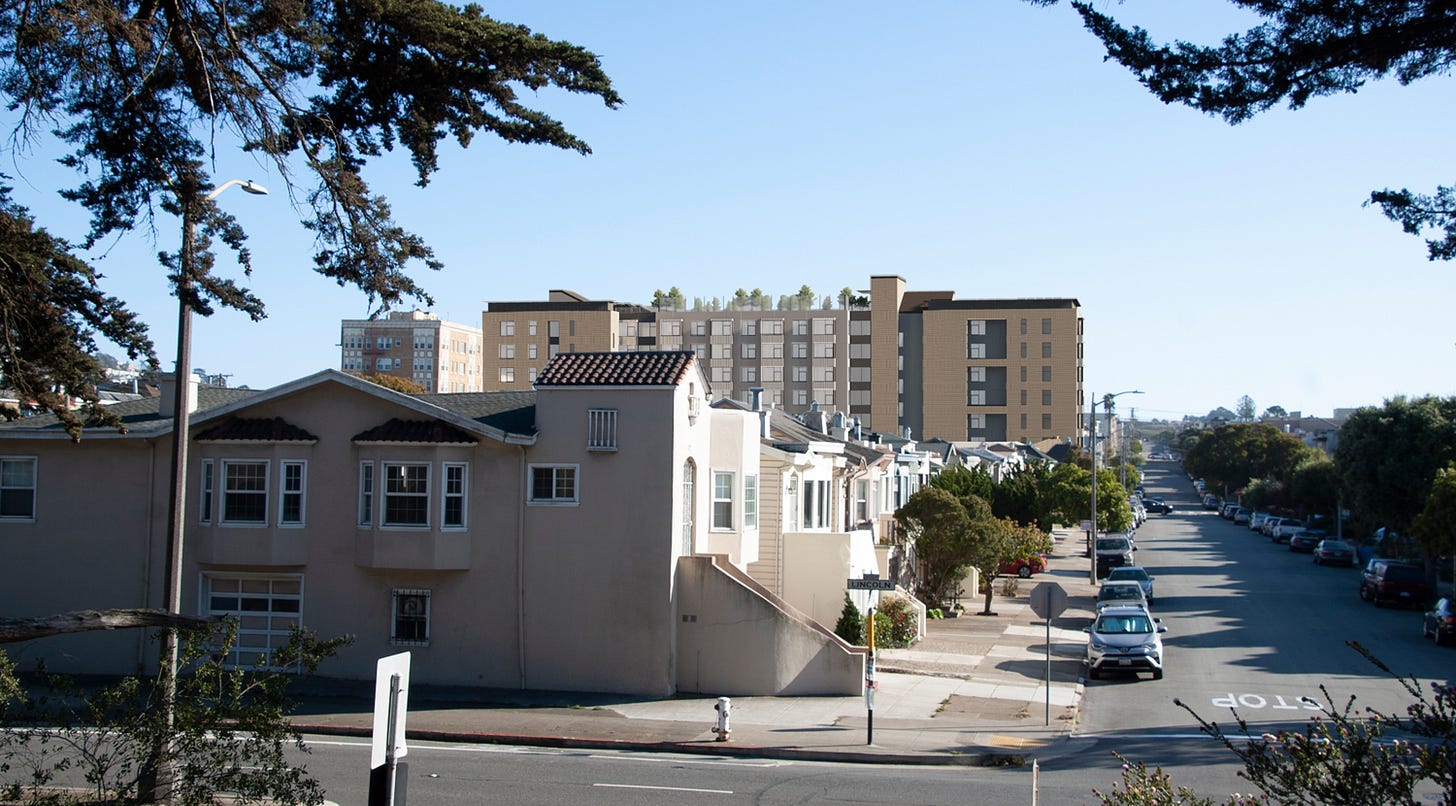Fault Lines Movie Review: why Sacramento had to save San Francisco from itself

This past week I attended the New York City premiere of the housing documentary Fault Lines, hosted by local housing advocacy group Open New York. The housing abundance movement is very text-heavy (lots of blog posts, tweets, and books), so I was pretty excited to see a movie about the topic that might appeal to a new audience.
Overall, Fault Lines details common NIMBY tactics and illustrates why San Francisco can’t build enough housing on its own. The movie doesn't fully explore this, but state-level reforms from Sacramento are actually accomplishing what local housing activists have sought for years.
Fault Lines takes place in post-2020 San Francisco and revolves around three story lines. The first is about a father and son duo, Carlos and Andreas, who live in a hotel in the Tenderloin. They live in a hotel with Carlos’s mother because they cannot find an affordable apartment. Carlos grew up in the city, but as a disabled man struggles to hold down employment. In a cruel twist, some promising housing options are not available to him because he is not on welfare. He can see the lack of housing stability affects his son, who begins acting out and failing at school.

The second storyline, and probably the one I would call the main narrative of the movie, revolves around the first 100% affordable housing development in the San Francisco Sunset neighborhood, 2550 Irving Street. If you walk around the Sunset, you’ll see that the neighborhood does have a particular visual character of one- and two-story single family homes, packed close together. Trying to add a seven-story building filled with affordable units prompts a thermonuclear reaction from long-time residents who begin to organize together against the development.
In doing so, movie viewers get a taste of common NIMBY talking points and stock characters. This development is moving too fast. What about the shadow the building casts? Will there be enough parking? How could we possibly build more housing without adding more public transit? The activists become a mainstay of community hearings and a thorn in the side of the local leader who advocated for the development in the first place, Gordon Mar.
We also see the impact of more advanced NIMBY tactics. Namely, weaponizing environmental regulations via lawsuits to stall and scale down new housing. As it turns out, the affordable housing sits on a lot that used to house a dry cleaner. What if the trace chemicals the group discovers make developing the lot unsafe for neighbors? Could agencies complete additional studies? The anti-development group fails multiple times with this approach, but the results speak for themselves: the city grants initial permits for the project in July 2021, but construction only begins in mid-2024 after settling three appeals. Stalling via environmental regulations often kills housing projects and scares off would-be developers.
So why even pursue this development in the first place? The movie glosses over this detail, but San Francisco is technically mandated by the state to build housing. A process called Regional Housing Needs Allocation, administered by the California Department of Housing and Community Development, sets local housing goals for different affordability levels as part of a comprehensive state plan to increase housing. Even the NIMBY activists in this film concede their demands and state mandates put local leaders in a tough position. Additionally, 2550 Irving Street financially gets a boost from a state law that incentivizes dense housing near transit, SB 35. State laws both pull and push San Francisco to build this housing.

The third storyline of Fault Lines discusses the arc of city charter amendment Prop D, which would have streamlined the process to approve affordable housing projects. One interesting aspect of California democracy are voter-initiated Propositions that allow citizens to enact legislation by vote. In the movie, we meet the coalition assembling signatures for the Proposition, which include carpenter union members and local housing advocates. As the chief advocate for Prop D describes it, affordable housing projects could go from taking 5 to 7 years to get approved to just 5 to 7 months. At first, the odds of passage look promising. After all, who’s against the concept of faster affordable housing in San Francisco?
But then anti-development groups pull a legislative judo move: they put up their own Proposition, Prop E, that is almost identical to Prop D. However, many of the thresholds and conditions in that legislation would effectively kill the construction of affordable housing in San Francisco. So, the opposite effect of Prop D. As the movie points out, it’s hard for the unassuming voter to tell the two apart on the ballot.
Both propositions end up failing, so the movie ends this storyline on an uncertain note. That said, local activists could later declare victory. Many of the ideas from Prop D end up in a future state law, SB 423. And just this week, California gutted many of the environmental reviews required for housing by overhauling one of the most complex laws in the United States, CEQA. Perhaps the dam is breaking, or at least cracking, when it comes to housing construction in California thanks to a sustained focus by legislators in Sacramento.

Fault Lines doesn't explain all that, but it does introduce viewers to the world of local opposition to housing efforts. And the film ends the first storyline on a high note. Down the block from where his mom grew up in San Francisco, Carlos and his family finally moves into permanently affordable housing.
Side note: if you want to learn more about the history of how environmental rules came to stymie housing construction, I recommend the housing portions of Abundance by Ezra Klein and Derek Thompson. And if you want a deep dive on California specifically, Golden Gates: Fighting for Housing in America by Conor Dougherty is enlightening.



